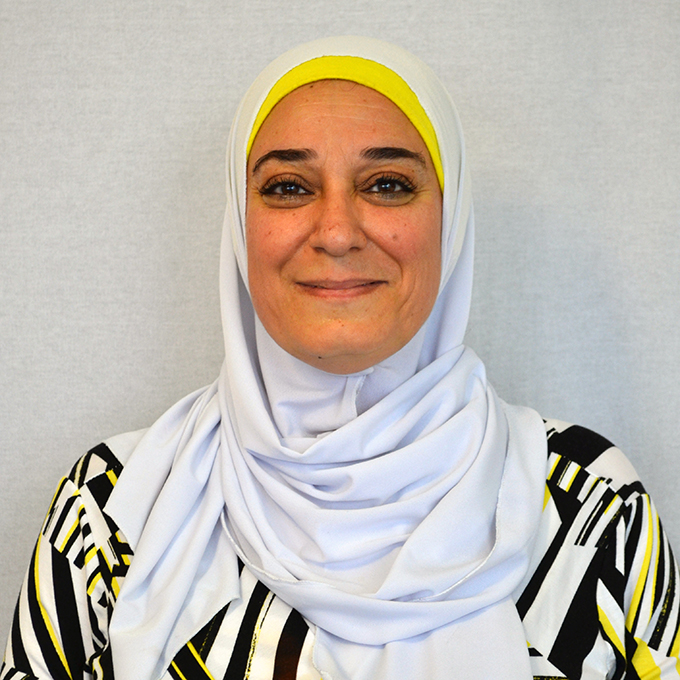Nehal Abu-Lail is an Associate Professor in the Department of Biomedical Engineering and Chemical Engineering.
Please tell us about yourself.
I am a female from Nazareth, Palestine, the eldest of six siblings, five girls all of whom are engineers and a boy who is an applied mathematician. My father was an Arabic teacher and my mom is a math teacher. I am married to a physical anthropologist. I came to the US in 2000 to get my PhD and stayed here since then. I call Boston home since it is the first city I landed in in the US.
What is your job title and what do you do?
I am an associate professor in the Department of Biomedical Engineering and Chemical Engineering. As a faculty member, my job entails performing research, securing funding, mentoring students, publishing papers, teaching and serving the department, college, university, scientific community, and the public.
What brought you to UTSA?
I moved my lab from Washington State University to UTSA for four main reasons. First, I was very interested in contributing to the development of the Chemical Engineering (CME) program. CME is the newest addition to the College of Engineering and I felt that I can put my signature on how it is designed. Second, our department has a research focus in the field of tissue engineering, which is a main research thrust for my group. Collaborating with my colleagues is important to enhancing my research program in interesting and unique ways. Third, I love San Antonio. Fourth, I became closer to family.
Tell me about your research and what led you to your field.
My lab focuses on fundamental investigations of cellular properties and cellular interactions with surfaces under stressful environments. We are interested largely in applications of bacterial biofilms in medical and environmental domains as well as in articular cartilage tissue engineering.
I became interested in this field as soon as I came to the US. My advisor was newly hired and was working on the new research area of nanoscale investigations of bacterial cells. In 2000, very few labs in the nation did similar research to what she did. It was innovative, unique and truly interesting. It still is. In my opinion, nothing beats the excitement of manipulating single molecules and single cells.
What got you into engineering? What is your first memory associated with engineering?
To answer the first part, I think three things. First, engineering is prestigious in the Middle East. All parents dream for their kids to be engineers or doctors. Second, it pays well. My salary as a starting engineer was higher than the salaries of both my parents combined after 30 years of teaching experiences. Third, the love of math.
As for the second part, I have countless memories associated with engineering. One that stands out is how different the size of a valve I saw when I interned in a petroleum refinery from what I pictured in mind. That was revealing.
What projects are you working on now?
We are working on several projects at the moment. Three PhD students in the lab are investigating variable aspects of tissue engineering of articular cartilage. One MS student is investigating how bacterial infections affect diabetic wounds using a skin tissue engineered model. Furthermore, one MS student is investigating how biochar can be utilized in sand to attenuate the transport of bacterial pathogens in the sub-surface. Finally, I am exploring why women are minorities in engineering in the US while they are a majority in predominantly Muslim countries.
How do you define success?
I set criteria for myself that pushes me out of my comfort zone. When I accomplish that, I increase the bar more. I continue to develop myself to achieve more. Overall, I want to be an excellent teacher, researcher and servant who continues to learn and to excel with time. In academia, we have known measures for each of the categories above and I always try to exceed what is accepted as the norm by most of my colleagues in each category.
What is your favorite thing about San Antonio?
Many things but I have to pick one then that will be the diversity of the birds and wild flowers in the city.


